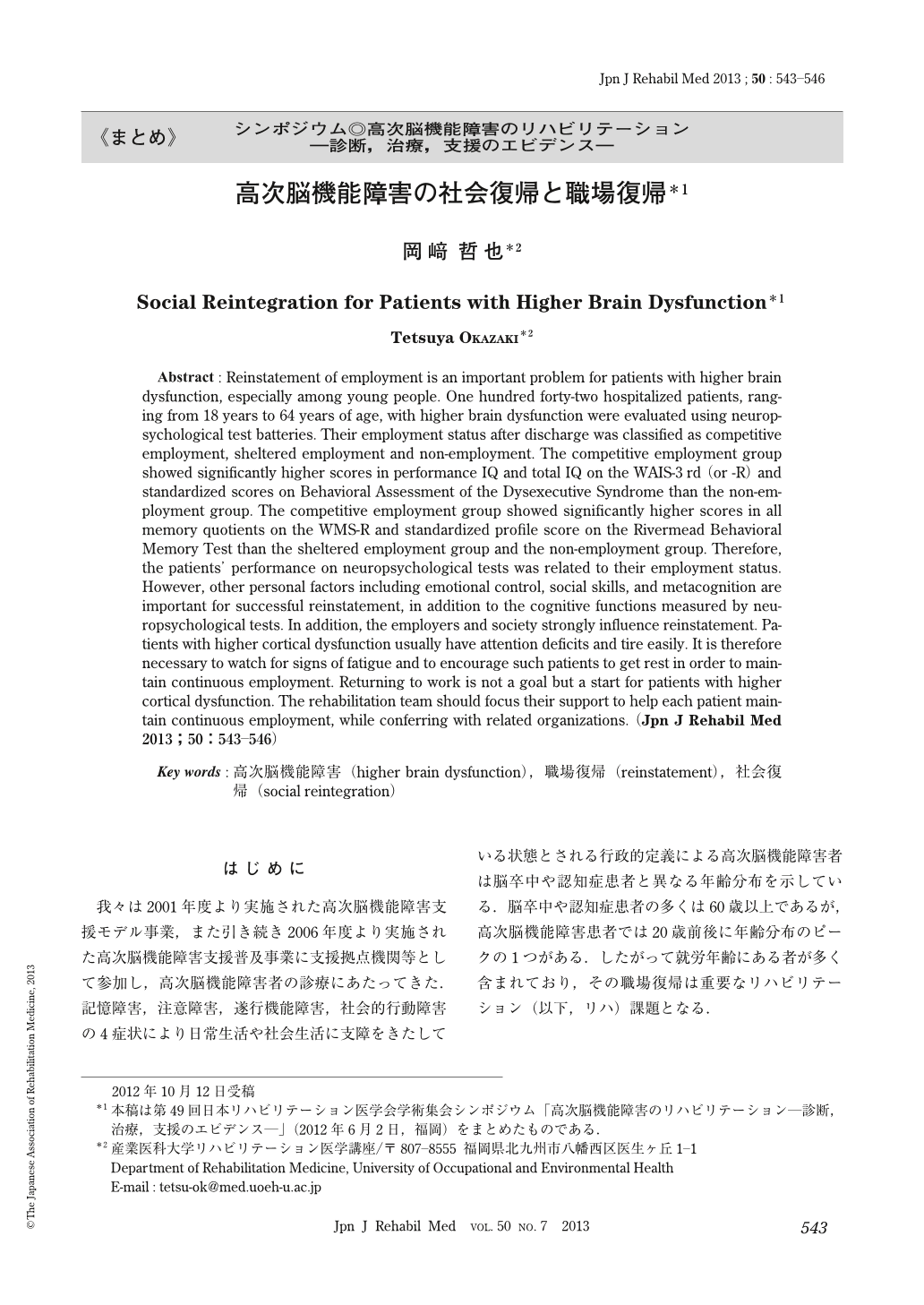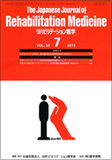Japanese
English
- 販売していません
- Abstract 文献概要
- 1ページ目 Look Inside
はじめに
我々は2001年度より実施された高次脳機能障害支援モデル事業,また引き続き2006年度より実施された高次脳機能障害支援普及事業に支援拠点機関等として参加し,高次脳機能障害者の診療にあたってきた.記憶障害,注意障害,遂行機能障害,社会的行動障害の4症状により日常生活や社会生活に支障をきたしている状態とされる行政的定義による高次脳機能障害者は脳卒中や認知症患者と異なる年齢分布を示している.脳卒中や認知症患者の多くは60歳以上であるが,高次脳機能障害患者では20歳前後に年齢分布のピークの1つがある.したがって就労年齢にある者が多く含まれており,その職場復帰は重要なリハビリテーション(以下,リハ)課題となる.
Abstract : Reinstatement of employment is an important problem for patients with higher brain dysfunction, especially among young people. One hundred forty-two hospitalized patients, ranging from 18 years to 64 years of age, with higher brain dysfunction were evaluated using neuropsychological test batteries. Their employment status after discharge was classified as competitive employment, sheltered employment and non-employment. The competitive employment group showed significantly higher scores in performance IQ and total IQ on the WAIS-3rd (or -R) and standardized scores on Behavioral Assessment of the Dysexecutive Syndrome than the non-employment group. The competitive employment group showed significantly higher scores in all memory quotients on the WMS-R and standardized profile score on the Rivermead Behavioral Memory Test than the sheltered employment group and the non-employment group. Therefore, the patients' performance on neuropsychological tests was related to their employment status. However, other personal factors including emotional control, social skills, and metacognition are important for successful reinstatement, in addition to the cognitive functions measured by neuropsychological tests. In addition, the employers and society strongly influence reinstatement. Patients with higher cortical dysfunction usually have attention deficits and tire easily. It is therefore necessary to watch for signs of fatigue and to encourage such patients to get rest in order to maintain continuous employment. Returning to work is not a goal but a start for patients with higher cortical dysfunction. The rehabilitation team should focus their support to help each patient maintain continuous employment, while conferring with related organizations.

Copyright © 2013, The Japanese Association of Rehabilitation Medicine. All rights reserved.


